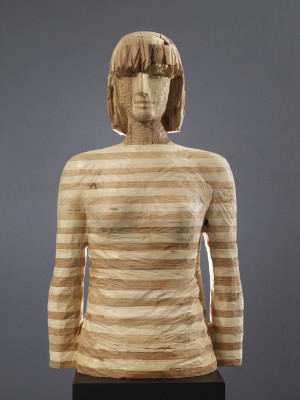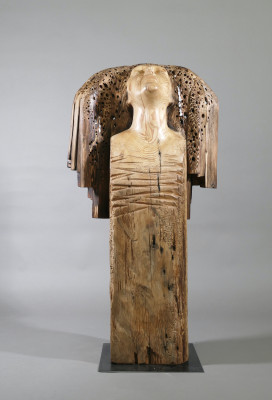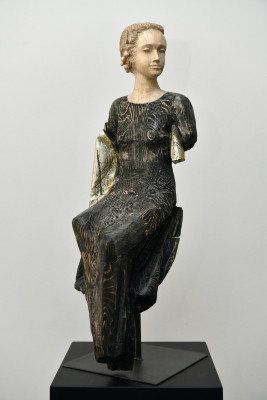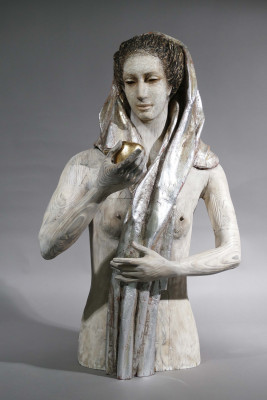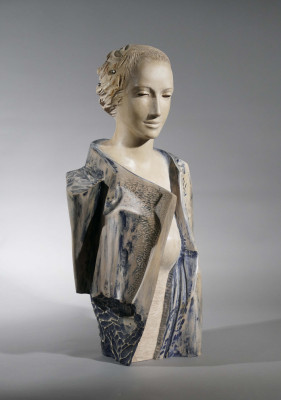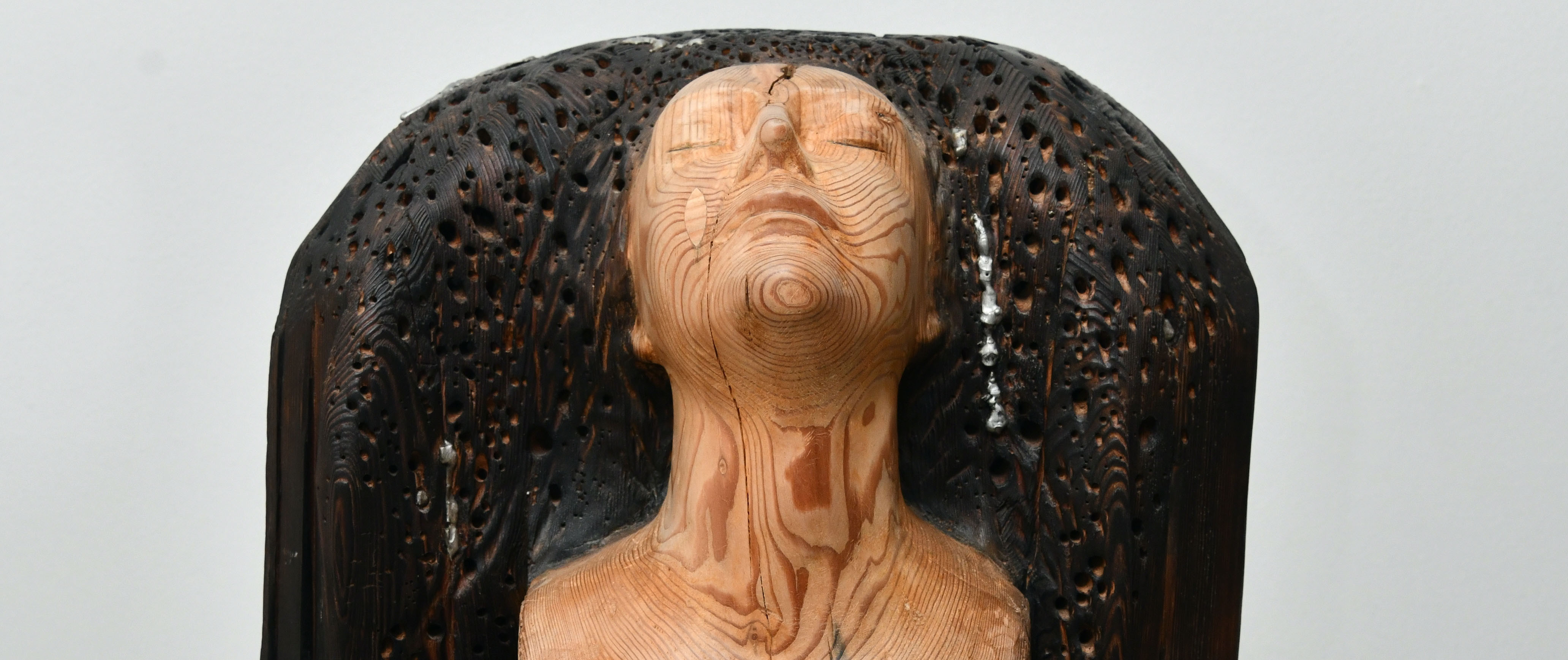
Giorgio Conta
Sculpture works
Giorgio Conta draws inspiration for the forms of his sculptures mainly in the nature of the woods and mountains that surround him. His artistic research focuses mainly on the figure, which can be dreamlike, shrouded in mystery, containing unknowns, disquiet, wonder, and enigmas of existence. Life, in all its forms, has always been a cause for reflection for him. He does not understand the figure as being in a fragmentary state of ruin, in the belief that it is aesthetically more eloquent and meaningful than when it was complete and intact. Fragment is not to be understood as a broken piece of object, a detached part or splinter of a lost and no longer attainable wholeness, but rather as a building up, an assembling to reach wholeness, which can then be completed in the eye and mind of the beholder. Instead of fragments, it would be better to define them as detached, isolated "parts," "particulars," "details" placed in the foreground and thus highlighted. These details are elements of a puzzle that can be ideally reassembled, as a simile of contemporary man "fragmented" inwardly in a kind of new palingenesis.
Biography
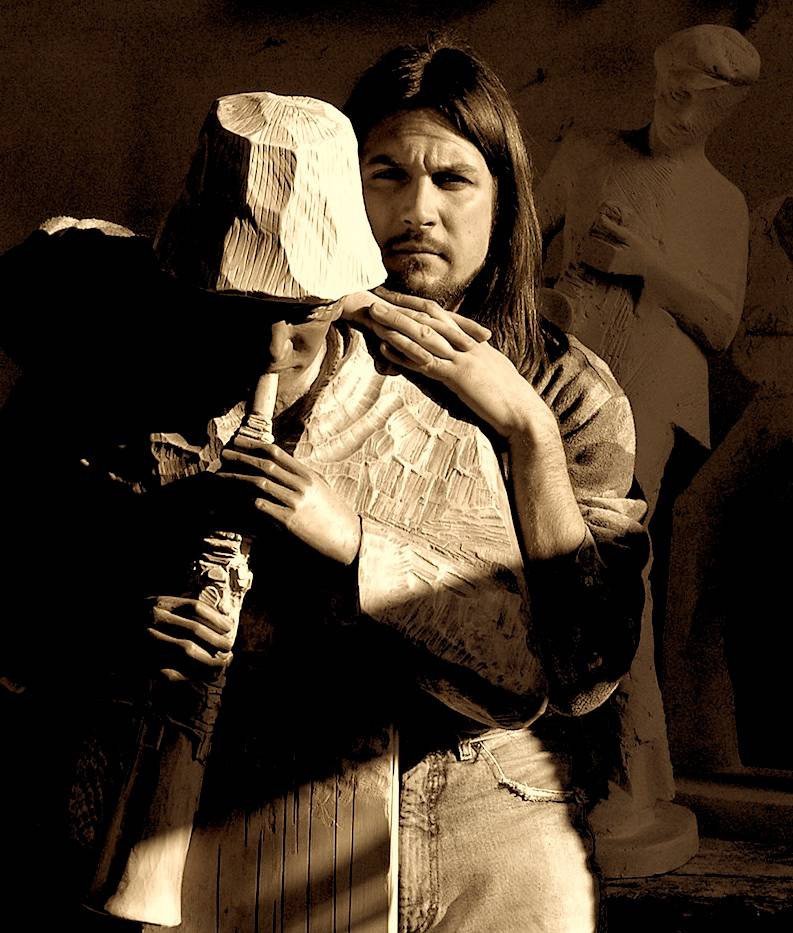
Giorgio Conta, sculptor and painter, was born in Cles in 1978 and lives and works in Monclassico in Val di Sole (TN). He grew up in a stimulating environment and from a very young age came into contact with various cultural figures, including the pianist Arturo Benedetti Michelangeli, a family friend. He trained at lza school of sculpture in Ortisei, also devoting himself to drawing and painting. He creates monumental works in Italy and abroad including the 5-meter-high bronze monument for St Mary Catholic Cemetery and Mausoleum in Chicago, the monument for Fiumicino airport, and the one depicting Father Kino in Segno, Trentino. In 2010 he was received by H.H. Benedict XVI to whom he paid tribute the sketch of the bronze group made for the shrine of Pietralba (BZ).
